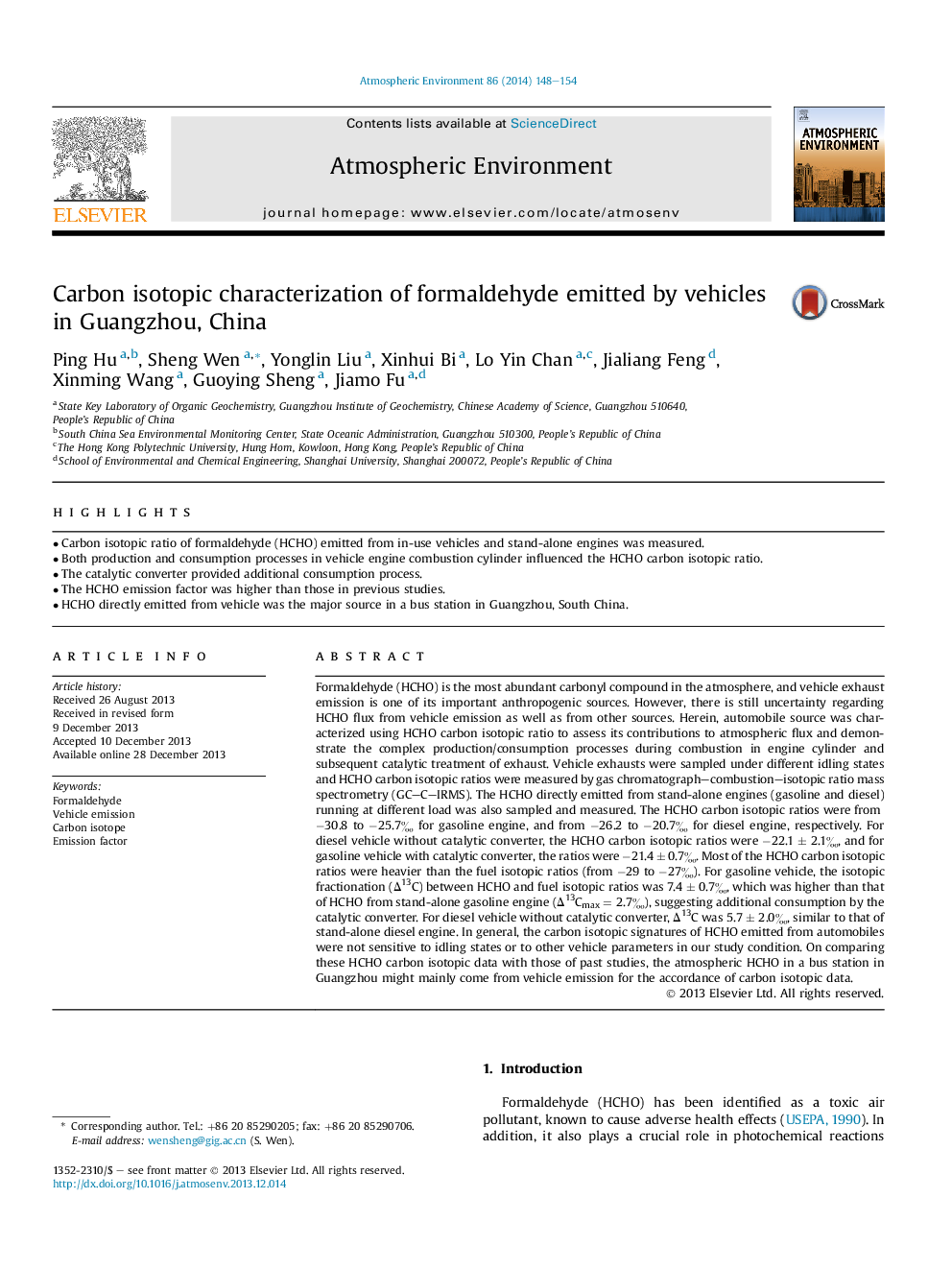| Article ID | Journal | Published Year | Pages | File Type |
|---|---|---|---|---|
| 6340799 | Atmospheric Environment | 2014 | 7 Pages |
Abstract
Formaldehyde (HCHO) is the most abundant carbonyl compound in the atmosphere, and vehicle exhaust emission is one of its important anthropogenic sources. However, there is still uncertainty regarding HCHO flux from vehicle emission as well as from other sources. Herein, automobile source was characterized using HCHO carbon isotopic ratio to assess its contributions to atmospheric flux and demonstrate the complex production/consumption processes during combustion in engine cylinder and subsequent catalytic treatment of exhaust. Vehicle exhausts were sampled under different idling states and HCHO carbon isotopic ratios were measured by gas chromatograph-combustion-isotopic ratio mass spectrometry (GC-C-IRMS). The HCHO directly emitted from stand-alone engines (gasoline and diesel) running at different load was also sampled and measured. The HCHO carbon isotopic ratios were from â30.8 to â25.7â° for gasoline engine, and from â26.2 to â20.7â° for diesel engine, respectively. For diesel vehicle without catalytic converter, the HCHO carbon isotopic ratios were â22.1 ± 2.1â°, and for gasoline vehicle with catalytic converter, the ratios were â21.4 ± 0.7â°. Most of the HCHO carbon isotopic ratios were heavier than the fuel isotopic ratios (from â29 to â27â°). For gasoline vehicle, the isotopic fractionation (Î13C) between HCHO and fuel isotopic ratios was 7.4 ± 0.7â°, which was higher than that of HCHO from stand-alone gasoline engine (Î13Cmax = 2.7â°), suggesting additional consumption by the catalytic converter. For diesel vehicle without catalytic converter, Î13C was 5.7 ± 2.0â°, similar to that of stand-alone diesel engine. In general, the carbon isotopic signatures of HCHO emitted from automobiles were not sensitive to idling states or to other vehicle parameters in our study condition. On comparing these HCHO carbon isotopic data with those of past studies, the atmospheric HCHO in a bus station in Guangzhou might mainly come from vehicle emission for the accordance of carbon isotopic data.
Related Topics
Physical Sciences and Engineering
Earth and Planetary Sciences
Atmospheric Science
Authors
Ping Hu, Sheng Wen, Yonglin Liu, Xinhui Bi, Lo Yin Chan, Jialiang Feng, Xinming Wang, Guoying Sheng, Jiamo Fu,
